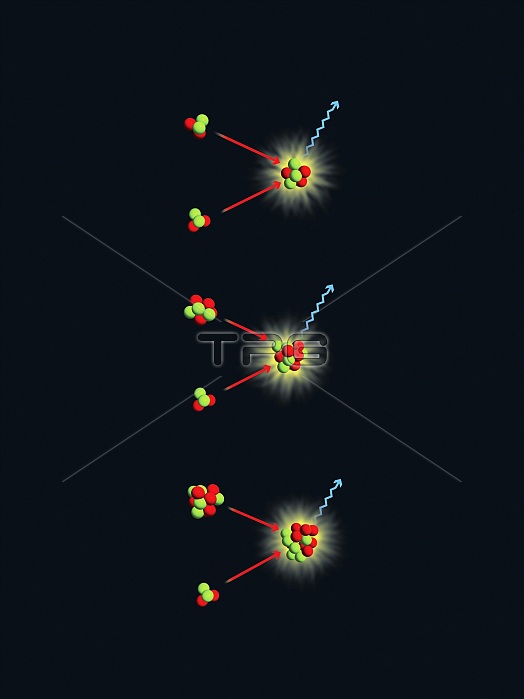
Triple-alpha nuclear fusion, illustration. This is a set of nuclear fusion reactions by which helium nuclei (alpha particles) form heavier elements. Nuclei are shown as protons (red) and neutrons (green). At top, two helium-4 nuclei fuse to form a beryllium-8 nucleus. At centre, helium and beryllium fuse to form a carbon-12 nucleus. At bottom, helium and carbon fuse to form an oxygen-16 nucleus. The triple alpha process is dependent on carbon-12 and beryllium-8 having resonances with the same energy as helium-4. Most fusion in stars is of hydrogen, rather than helium. This relatively rare helium fusion process takes a long time to produce much carbon, and no significant amount of carbon was produced in the Big Bang. This means that stellar nucleosynthesis produces large amounts of carbon and oxygen, but only a small fraction of these elements is converted into neon and heavier elements.
| px | px | dpi | = | cm | x | cm | = | MB |
Details
Creative#:
TOP25086376
Source:
達志影像
Authorization Type:
RM
Release Information:
須由TPG 完整授權
Model Release:
N/A
Property Release:
N/A
Right to Privacy:
No
Same folder images:

 Loading
Loading